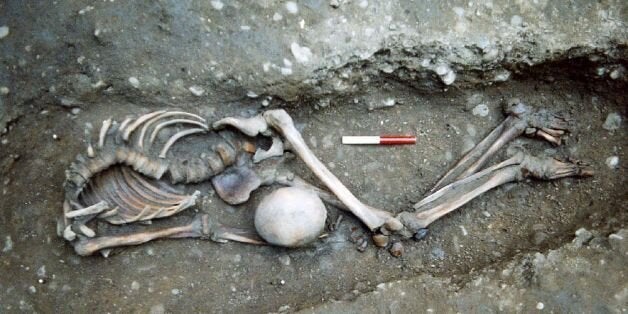
A group of decapitated men - thought to be gladiators from the early centuries AD - have been uncovered by archaeologists in York…but the background of one has left the experts particularly intrigued.
The group of bodies found near the Yorkshire city’s train station are thought to all be of British men - apart from one.
Using genome analysis. researchers from Trinity College Dublin, have built a picture of the men and found that one of them is actually of Middle Eastern origin.
The research revealed that he would have grown up in the region of modern day Palestine, Jordan or Syria before migrating to Yorkshire.
It is not known why he would have been in the city of York but it is thought that that is where he met his death.
Experts have speculated from the state of the bodies that the men were gladiators, although they could have also been soldiers or criminals.
Their skulls were buried with the body, although not positioned consistently – some were on the chest, some within the legs, and others at the feet.
They are all thought to be under 45 year of age, a paper entitled 'Genomic signals of migration and continuity in Britain before the Anglo-Saxons’ and published in Nature Communications, explains.
Dr Gundula Muldner of the University of Reading, Dr Janet Montgomery of the University of Durham and Malin Holst and Anwen Caffel of York Osteoarchaeology used whole genome analysis on the seven men.
They found that the poor childhood health of these men suggests that they were locals who endured childhood stress, but their robust skeletons and healed trauma, suggest that they were used to wielding weapons.
SEE ALSO:
Christine McDonnell, Head of Curatorial and Archive Services for York Archaeological Trust, said: “Archaeology and osteoarchaeology can tell us a certain amount about the skeletons, but this new genomic and isotopic research can not only tell us about the body we see, but about its origins, and that is a huge step forward in understanding populations, migration patterns and how people moved around the ancient world
“This hugely exciting, pioneering work will become the new standard for understanding the origins of skeletons in the future, and as the field grows, and costs of undertaking this kind of investigation fall, we may be able to refine our knowledge of exactly where the bodies were born to a much smaller region. That is a remarkable advance.”